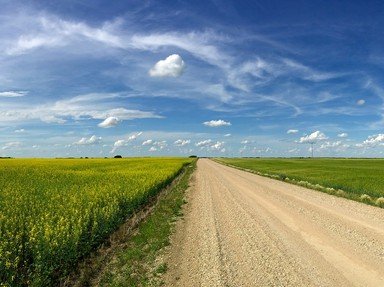Quiz Answer Key and Fun Facts
1. Has Regina always been the capital of Saskatchewan?
2. Saskatchewan's other large city lies to the northwest of the capital.
Which city is it?
3. What town is on the Saskatchewan-Alberta border?
4. Just as Saskatchewan has border towns, it also has border lakes. The eighth largest and ninth largest lakes in Canada (and the first and second largest in the province) are border lakes with other provinces.
Which are they?
5. There's an interprovincial park at the highest point between the east coast and the Rockies on the Canadian mainland, in southwestern Saskatchewan.
What is it called?
6. Wanuskewin Heritage Park, just north of Saskatoon, includes a structure that shines a light on Saskatchewan's past.
What is it?
7. South of Moose Jaw you will find the Claybank National Historic Site. The name might give you a clue as to what it is.
8. The Saskatchewan River is formed by the joining of the South Saskatchewan and the North Saskatchewan Rivers. Both the North and South Saskatchewan originate in Rocky Mountain icefields.
Which ones?
9. What is the common link between these Saskatchewan places?
Frog Lake, Batoche, Duck Lake, and Fish Creek.
10. Saskatchewan is unusual in that none of its borders are based on natural features (rivers, drainage divisions, etc). All of the borders are lines of latitude or longitude.
Which parallels of latitude make up the south and north borders, respectively?
Source: Author
agony
This quiz was reviewed by FunTrivia editor
WesleyCrusher before going online.
Any errors found in FunTrivia content are routinely corrected through our feedback system.
